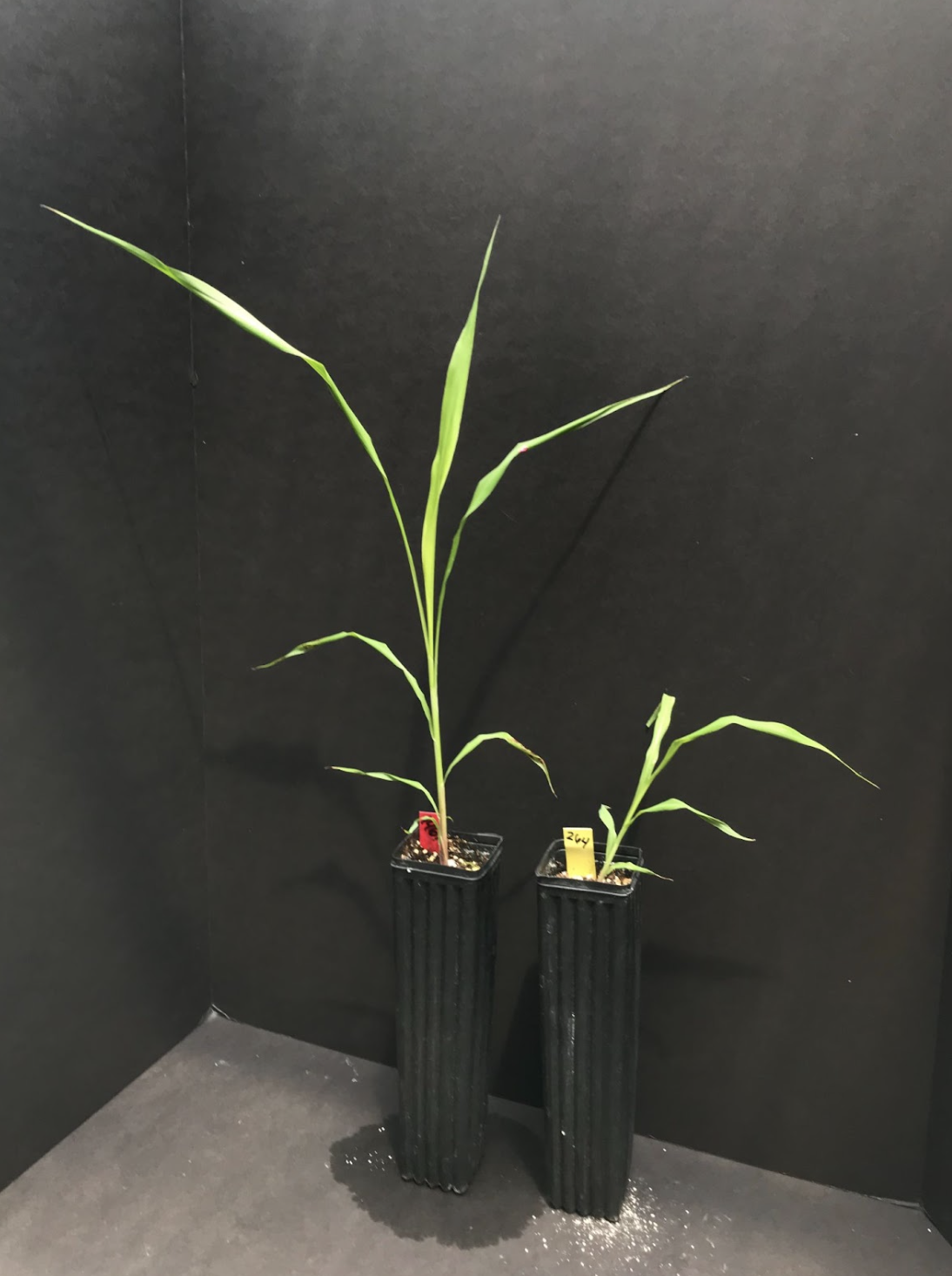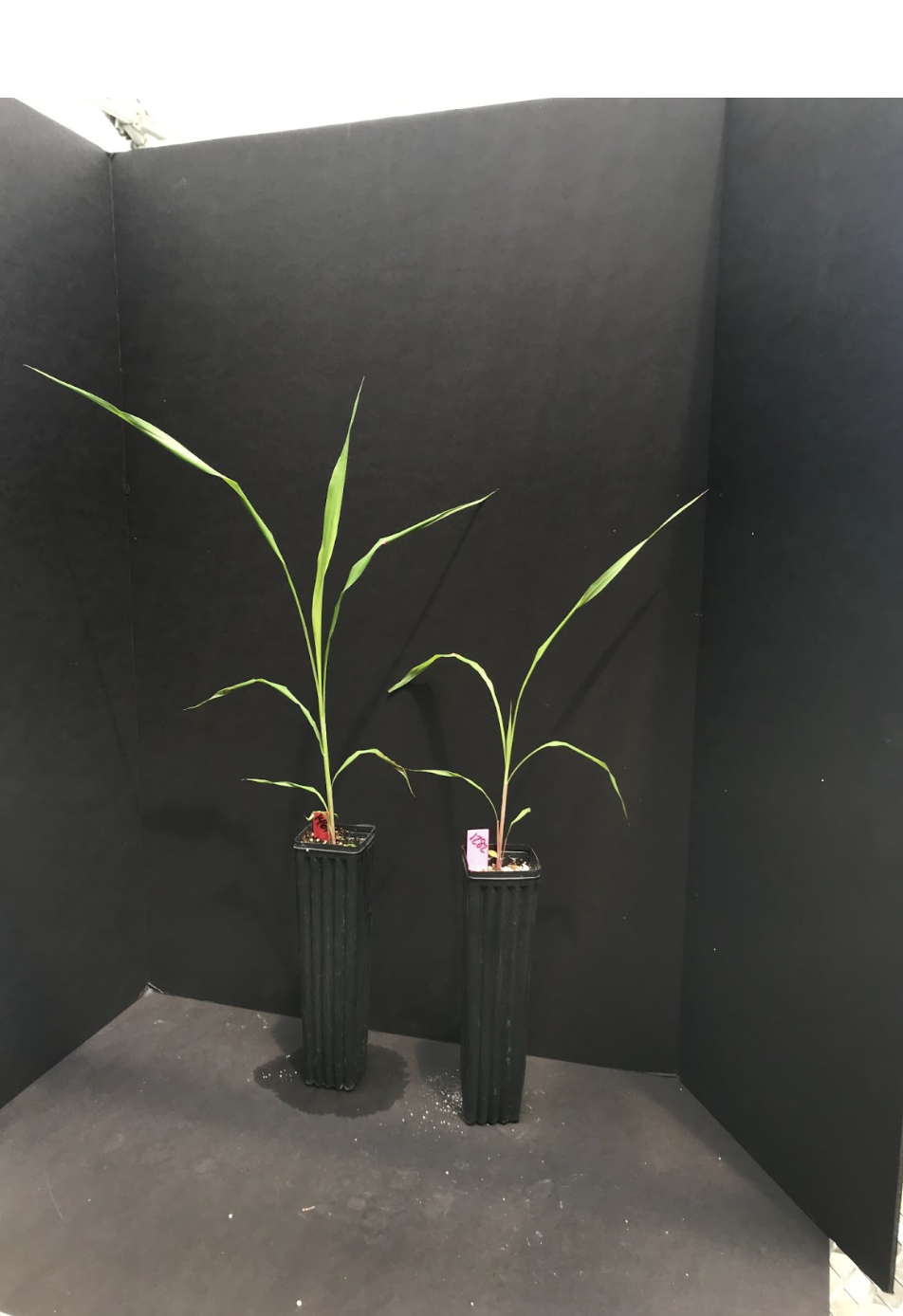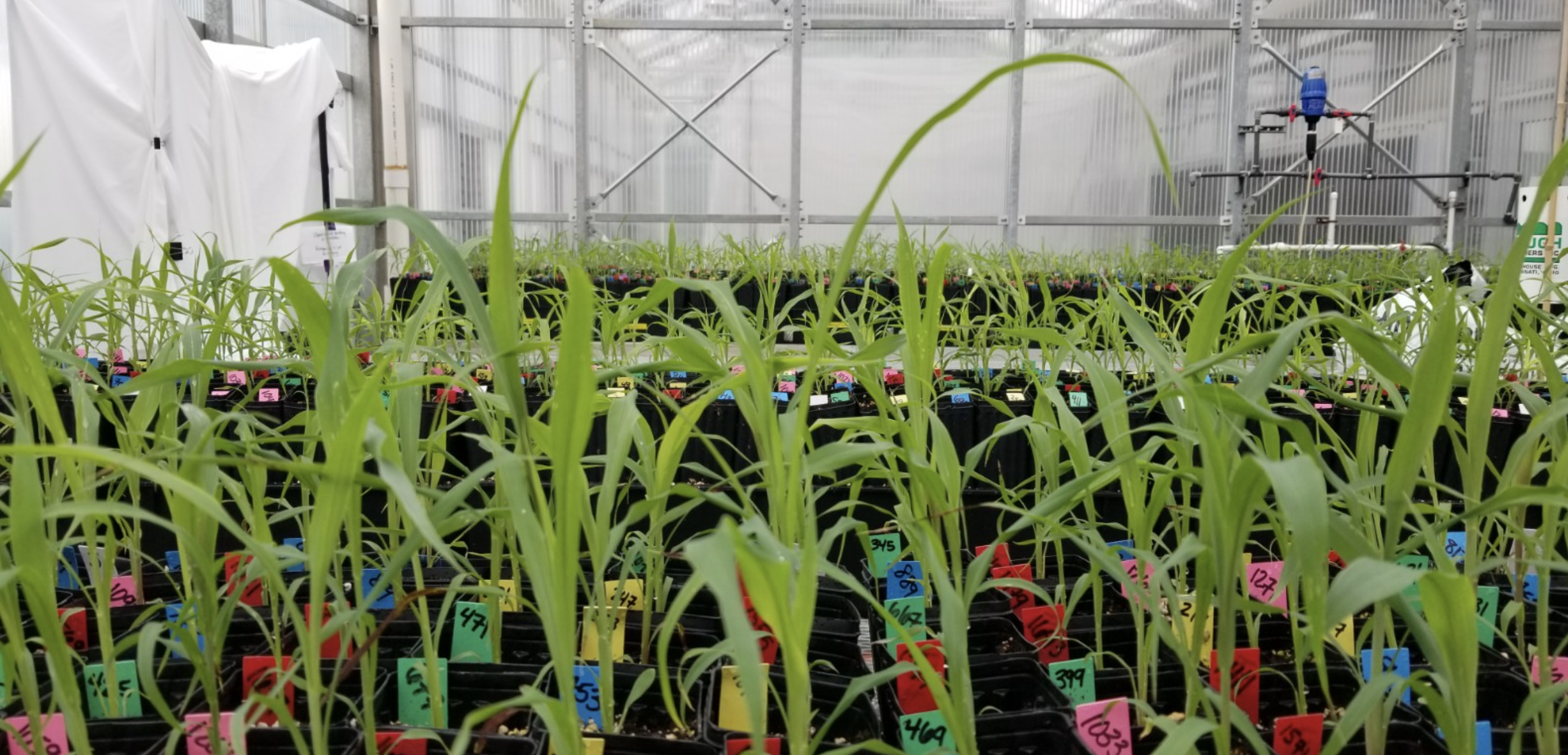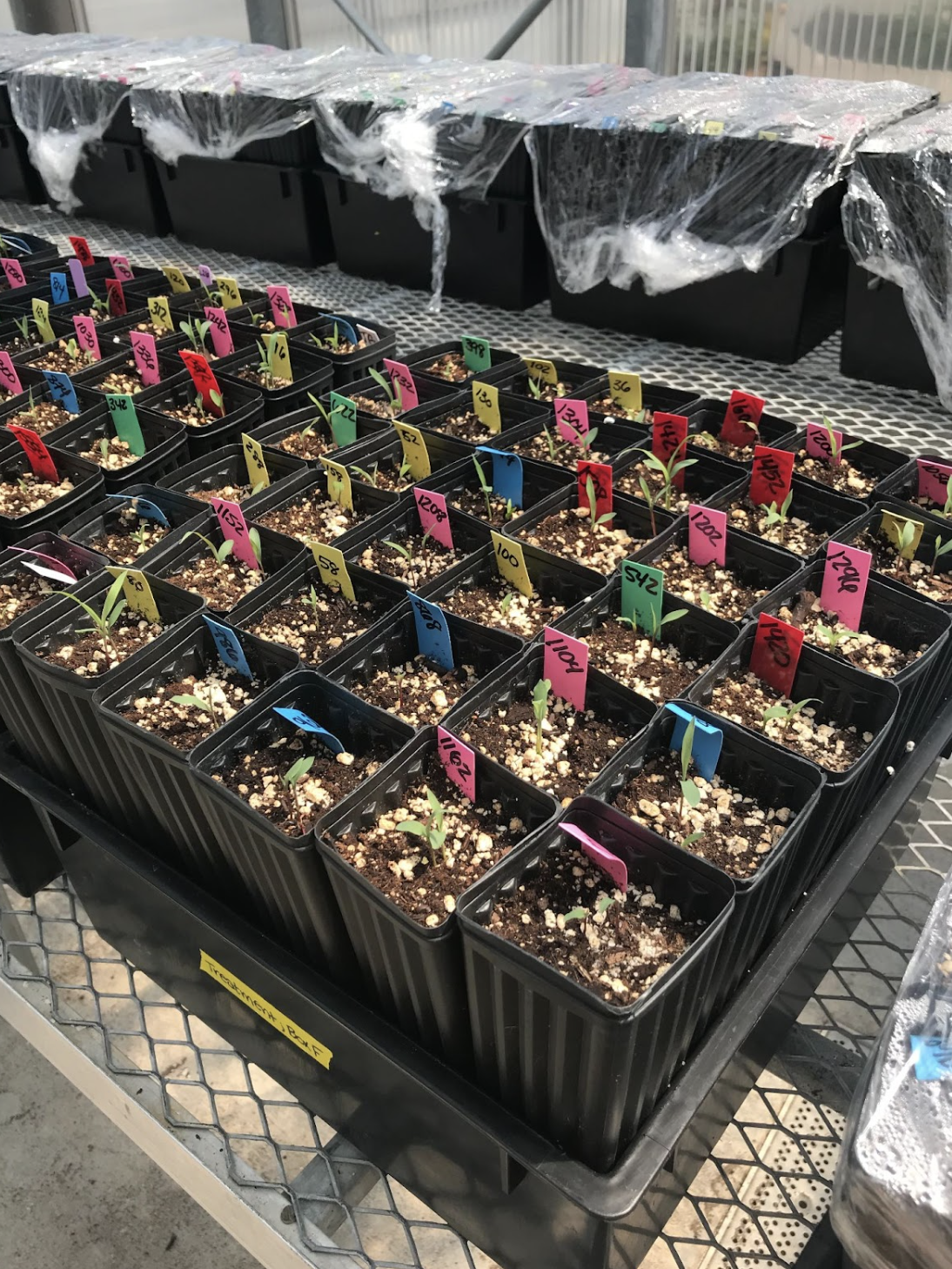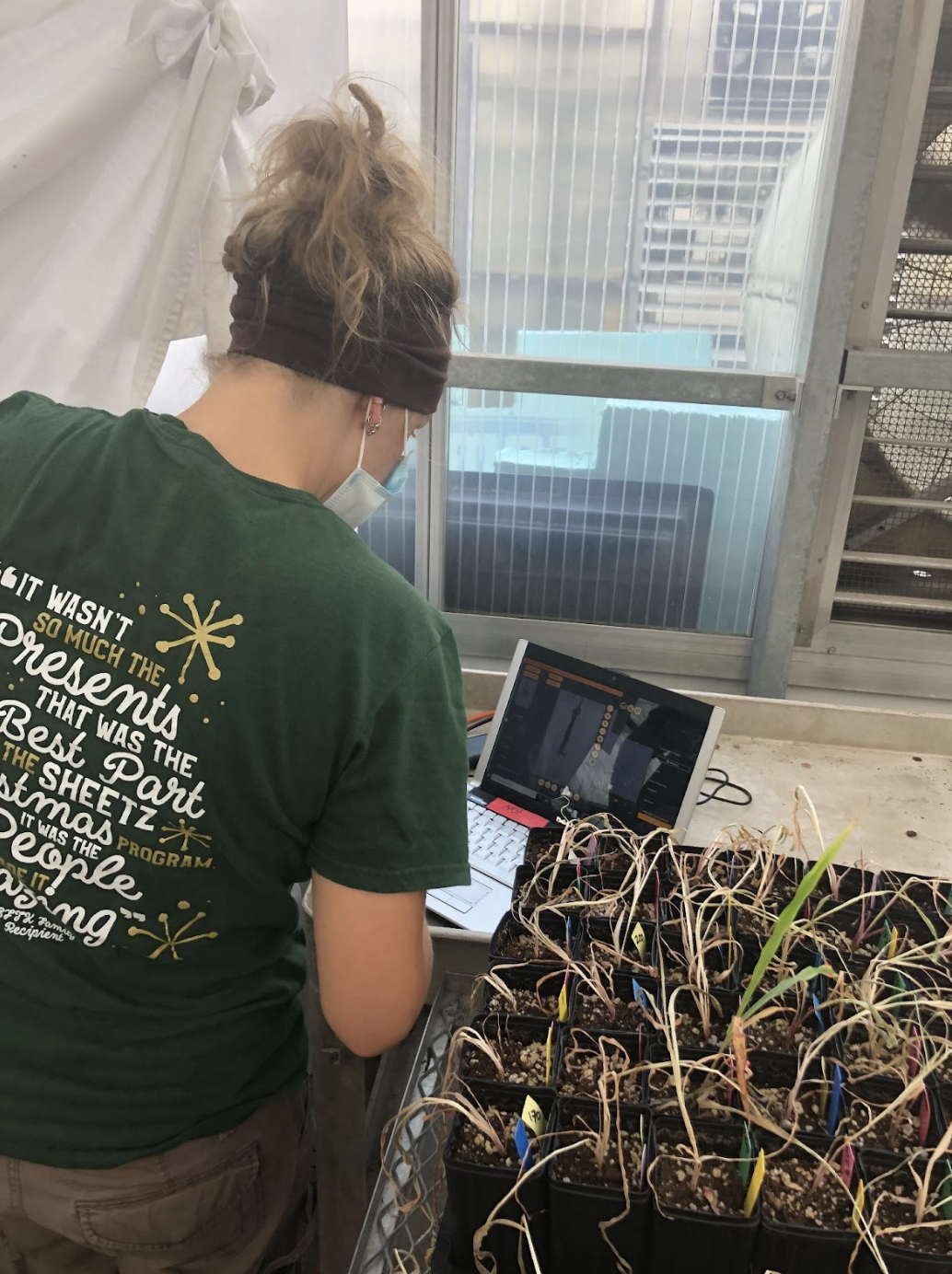Domestication of Sorghum bicolor has led to drought-resistant traits, where a shorter stature and specific physiological mechanisms help conserve water and maintain grain yield under stress.
Keywords: Domestication, Sorghum, drought stress, morphology, plant architecture, recombinant inbred line, water management
One of the most interesting findings of this work relates to how post-domestication shifts in plant architecture influence drought tolerance. Although S. propinquum has a more robust root system than S. bicolor, facilitating greater water uptake, this extensive root system is resource-intensive. In contrast, S. bicolor uses physiological processes to combat water loss, leveraging short-term and reversible strategies that ultimately require fewer resources than the structural approach of S. propinquum. Altogether, this work sheds light on traits that can be incorporated into breeding programs to generate drought resistant varieties of Sorghum, drawing on findings from both domesticates and their wild relatives to help safeguard future food security. – Lehrer
Researchers from West Virginia University, University of Pittsburgh, Q2 Solutions and Potomac State College of West Virginia University investigated drought resistance traits that emerged as a byproduct of domestication, a process focused on architectural changes such as short stature and explored how domestication-driven architectural changes in Sorghum bicolor contribute to drought resistance, specifically focusing on the short-statured domesticated variety TX7000. Compared to its wild progenitors, TX7000’s reduced height is associated with decreased water tension in the xylem, promoting hydraulic safety under drought conditions. Quantitative Trait Loci (QTL) analyses revealed that RILs (recombinant inbred lines) with S. bicolor alleles at loci related to plant height and aboveground biomass showed architectural traits similar to unstressed plants, even under drought. This implies that domestication-selected alleles help maintain critical yield traits during water stress. Furthermore, many candidate genes identified within the drought-specific QTL play roles in reproductive timing, root growth, and hormone responses, supporting the idea that S. bicolor adapts to water-limited environments by prioritizing grain yield over vegetative growth.
Another focus of the study is on how belowground growth differences between S. bicolor and its wild relative S. propinquum affect drought tolerance. While S. propinquum has a more extensive root system aiding in water uptake, the domesticated S. bicolor compensates with physiological strategies such as stomatal closure to prevent water loss. Genes within the drought-specific QTL for leaf temperature, for instance, are involved in abscisic acid (ABA)-mediated stomatal regulation, a mechanism that conserves water in S. bicolor by reducing transpiration. The results highlight the complex interaction between domestication-driven structural traits and physiological mechanisms, suggesting that these adaptations in S. bicolor can be targeted in future crop breeding to enhance drought resilience in other cereal crops.
SorghumBase examples:
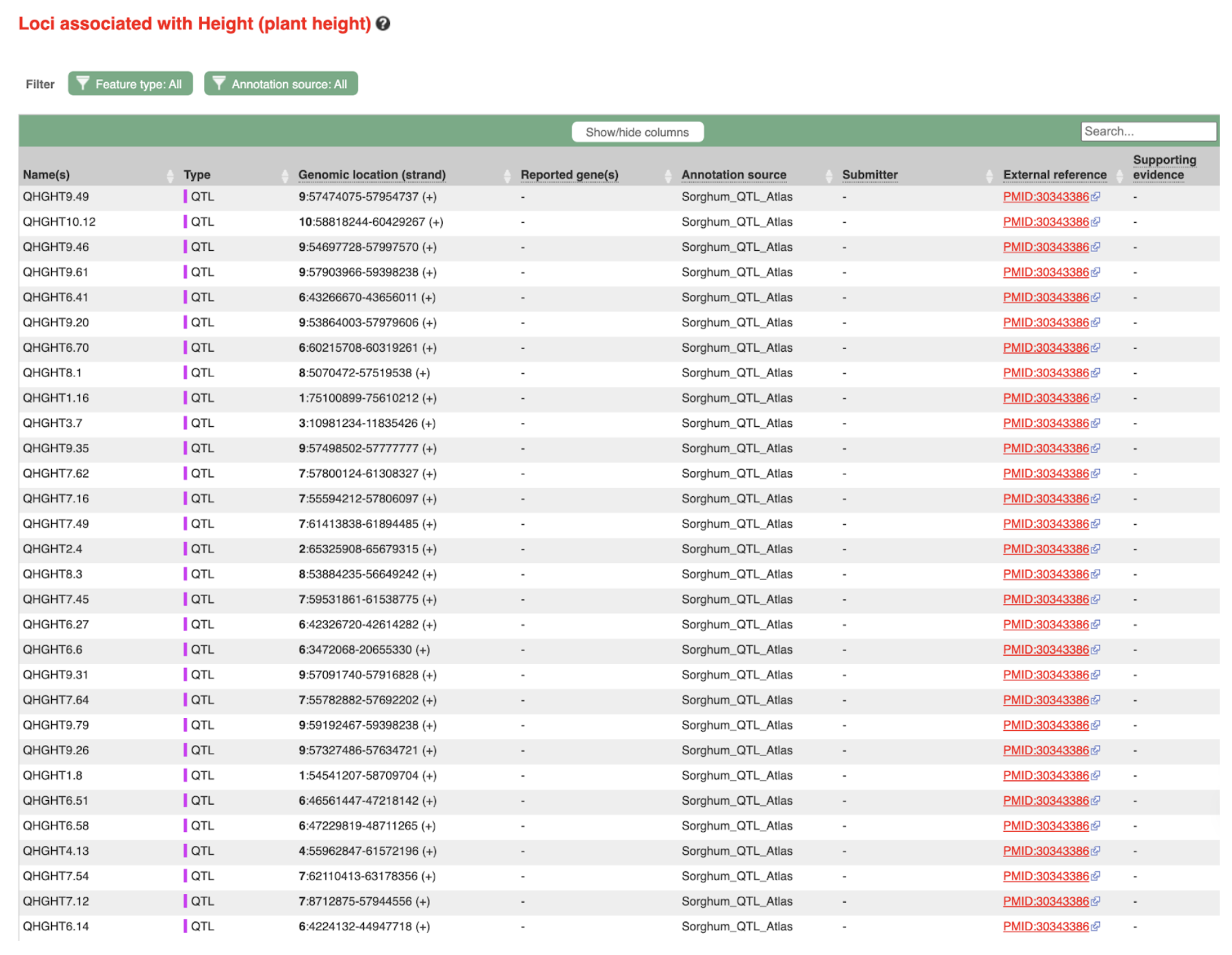

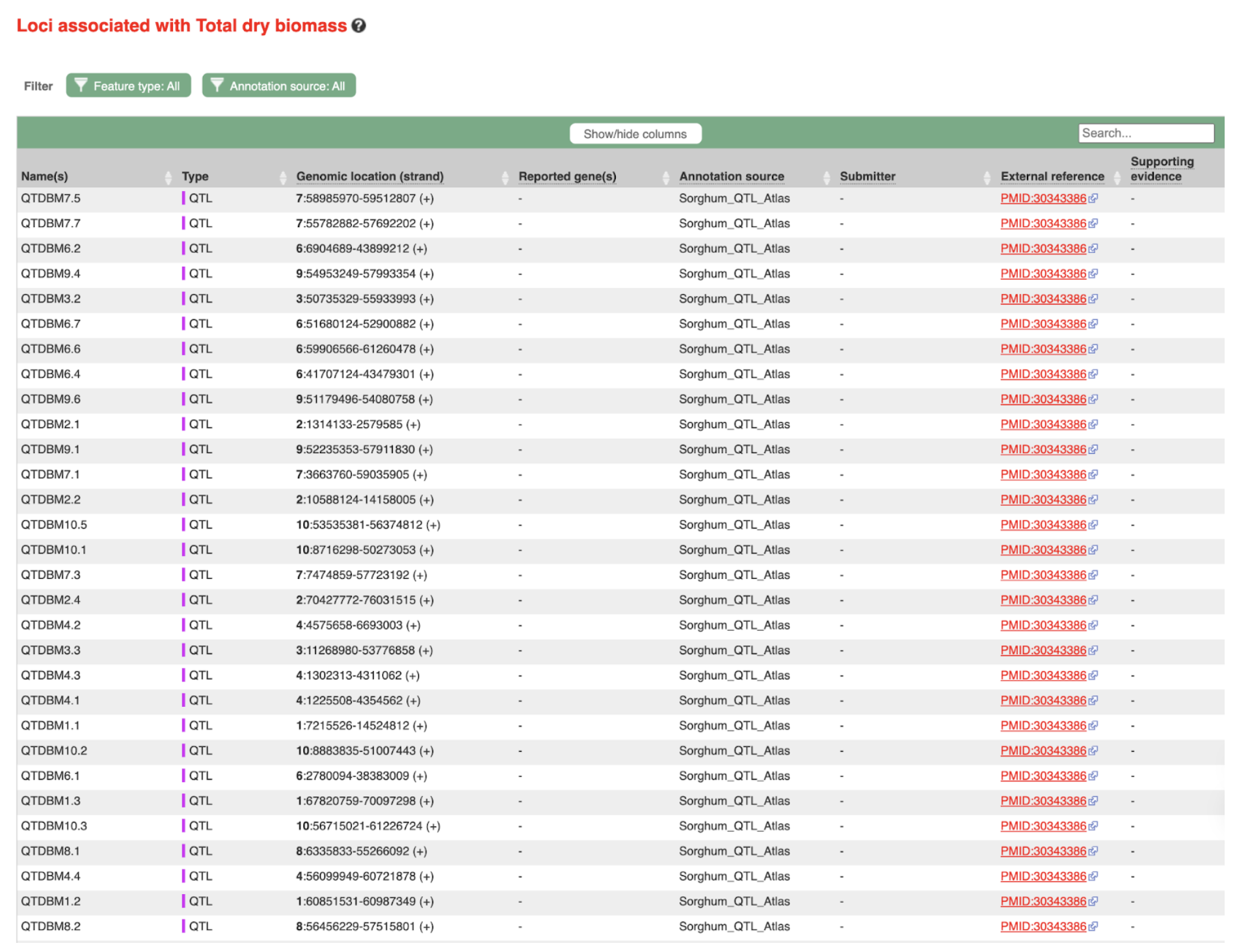
Reference:
Lehrer MA, Govindarajulu R, Smith F, Hawkins JS. Shifts in plant architecture drive species-specific responses to drought in a Sorghum recombinant inbred line population. Plant Biol (Stuttg). 2024 Oct 30. PMID: 39476337. doi: 10.1111/plb.13733. Read more
Related Project Websites:
- Hawkins Lab at West Virginia University: https://jenniferhawkins.faculty.wvu.edu/home
